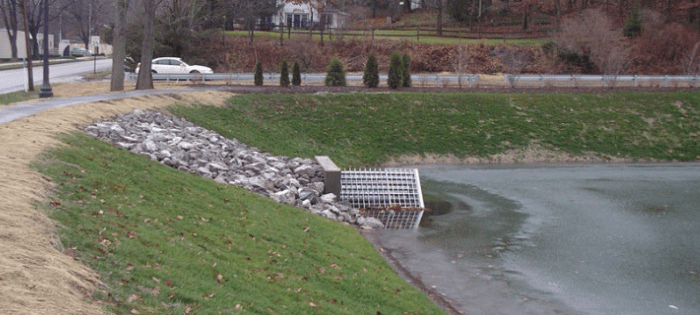
Environment
Comments: No Comments
Spring is here…warmer temperatures, melted snow, anticipated rain, and, unfortunately, elevated flood warnings. Is your facility set with its flood preparations/Storm Water Pollution Prevention Plan (SWPPP)?
Safeguarding Against Spring Thaw
Many areas, primarily across the Midwest, are at a far higher risk of flooding this spring due to heavy winter snowpack, near record levels of soil moisture, and existing stream flows that are already significantly higher than normal. Spring thaw is a critical time to evaluate potential runoff impacts from storm waters and to ensure compliance with regulatory requirements for storm water management, particularly this year.
Permit Requirements
According to the U.S. Environmental Protection Agency (EPA), “The National Pollutant Discharge Elimination System (NPDES) permit program addresses water pollution by regulating point sources that discharge pollutants into the waters of the United States.” NPDES permits are issued by states that have obtained EPA approval to issue permits or by EPA Regions in states without such approval.
Businesses with specific SIC/NAICS codes are required to have NPDES general permits in place to help assure protection of the nation’s surface waters. If a business is required to have an NPDES general permit, they are also required to have a Storm Water Pollution Prevention Plan (SWPPP) for their site.
What Is a SWPPP?
A SWPPP is a site-specific, written document that is required to comply with a storm water general permit. The SWPPP describes:
- Potential sources of storm water pollution at the site
- Activities to control sedimentation and erosion
- Practices to reduce pollutants in storm water discharges from the site
- Procedures to comply with the terms of the general permit and Clean Water Act requirements
SWPPPs are intended to be “living” documents that are updated to reflect changes at the site. With thawing, raining, and flooding in the forecast, it is important to review the SWPPP and any Best Management Practice (BMP) strategies to ensure the site is effectively managing storm water and meeting permit and regulatory requirements.
SWPPPs and BMP Strategies for Low-Level Contamination
Kestrel recently talked with the Iowa Department of Natural Resources (IDNR) about how sites can manage the potential impacts of storm water runoff due to anticipated flooding. Here are a few tips to share based on discussions and consultation with IDNR:
Q: If the sites have had no known spills and have evaluated the contained storm water (visual evaluation for sheen, pH testing, BOD, VOCs, Tier II chemicals, and/or any requirements listed on their NPDES permit), is it an acceptable management practice for them to pump the storm water from their containment areas if they are filled with storm water? If they can pump the storm waters, where is the best option to pump them to? Is it acceptable for the industry to pump the retained, non-impacted storm waters to a ditch/culvert basin off their industrial site property?
A: Under the conditions described, storm water can be pumped out of the containment areas when the facilities are permitted if they are required to have permits. The water can be pumped anywhere to which storm water runoff could otherwise be discharged. The discharge by pumping is no different than a discharge by natural runoff, but if the water is clean, it is best to pump during low flow to not exacerbate any issues caused by high flows.
Q: If a business meets the SIC code requirement and all they store outside is a garbage dumpster with a poly lid that covers the top, do they still have to have an NPDES general permit and a SWPPP?
A: Unless the dumpster is covered by a storm-resistant shelter that also precludes run-on and subsequent runoff from the area of the dumpster, including loading and unloading areas, a permit would still be required despite the presence of the lid on the dumpster.
Storm Water Preparedness
Kestrel has worked with many industrial sites that have engineered detention basins designed to help with storm water management and, in some cases, containment for chemical spills or fire waters. Frequently, management of these sites during high water events and in compliance with regulatory requirements can be confusing. Kestrel understands how to manage onsite detention basins that have filled with spring thaw waters and rain.
Contact Kestrel today for a 30-minute, no-obligation consultation to discuss your storm water management and permitting needs. We can help you identify and implement SWPPP and Best Management Practice (BMP) strategies to effectively deal with storm water and potential runoff impacts—and ensure compliance with your National Pollutant Discharge Elimination System (NPDES) permit requirements.
